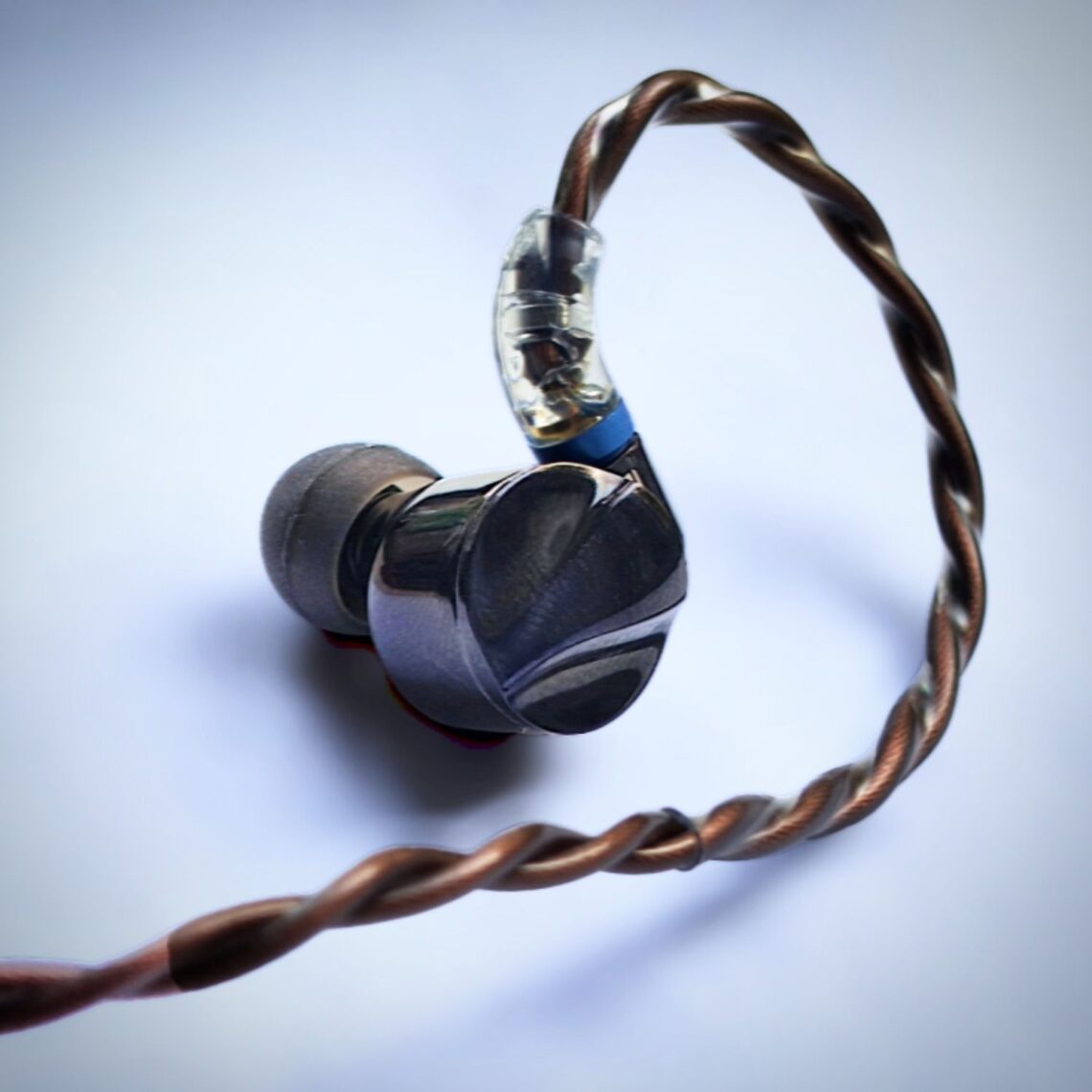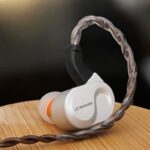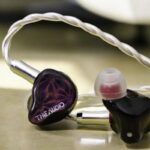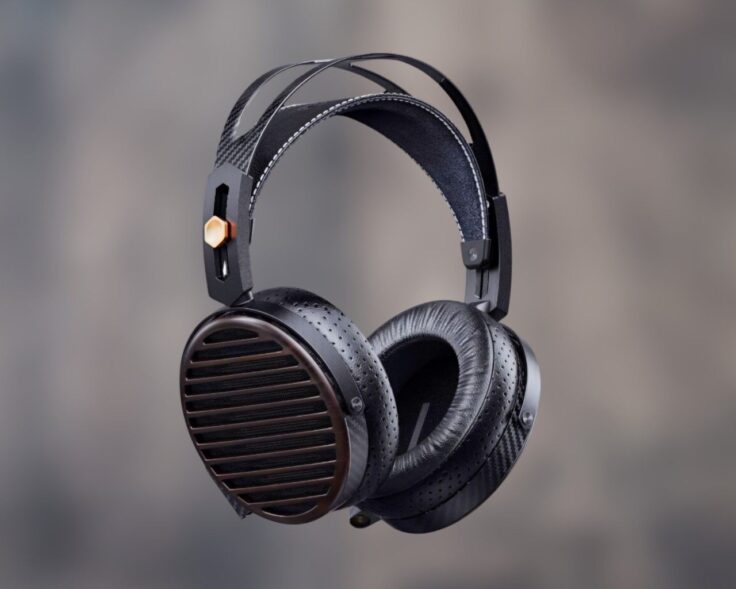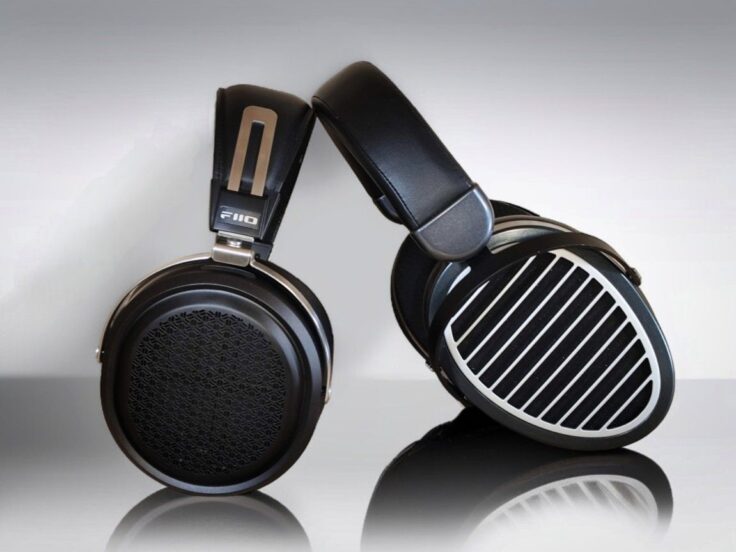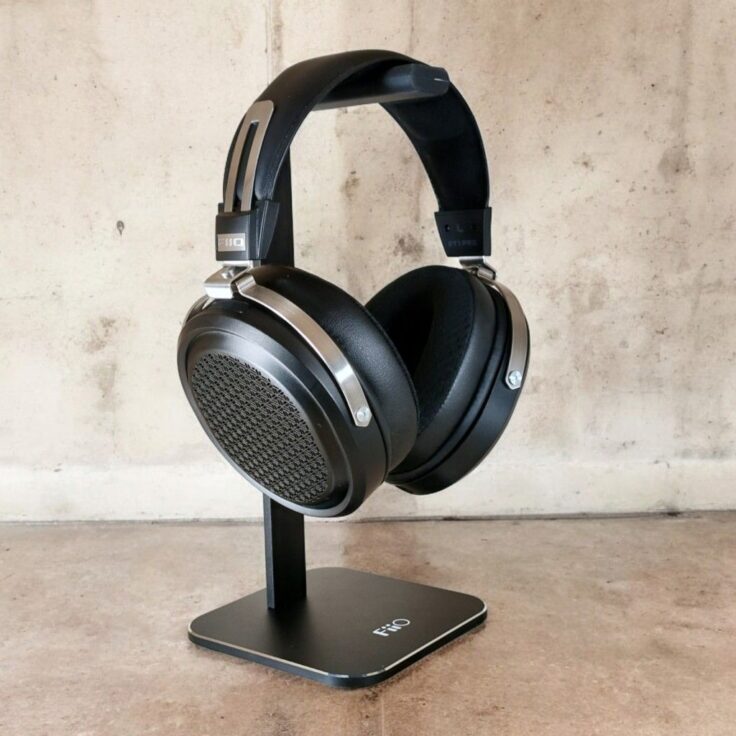The FiiO FD15 is the successor to the acclaimed FD5, which I recently published a piece about. Despite the FD5 being out of production, its exceptional qualities warranted a review. It boasts a fantastic warm timbre reminiscent of one of my favorite IEMs, the tiny Sennheiser IE800S.
According to FiiO, they have managed to improve the FD5 while at the same time reducing the price significantly, by close to 50%. I’ll come back to whether or not I think they’ve succeeded, but on paper there are many changes that look like improvements:
The new W-shaped gasket gives a 30% increase in the effective vibrating area, the 13.8 mm diaphragm is effectively 40% larger, the new magnet with a magnetic flux up to 1.5 Tesla is an increase of 70%, and the larger 8.6 mm voice coil gives 78% more driver power. There’s also a new bass vent system called the Tesla Valve, which is designed to acoustically enhance the bass response.
The FD15 features a metal alloy diaphragm, which FiiO calls “magnalium”, a blend of magnesium and aluminum. Focal used a similar alloy in the acclaimed Elear and Clear headphones. The material is light and rigid, important features to get low distortion.
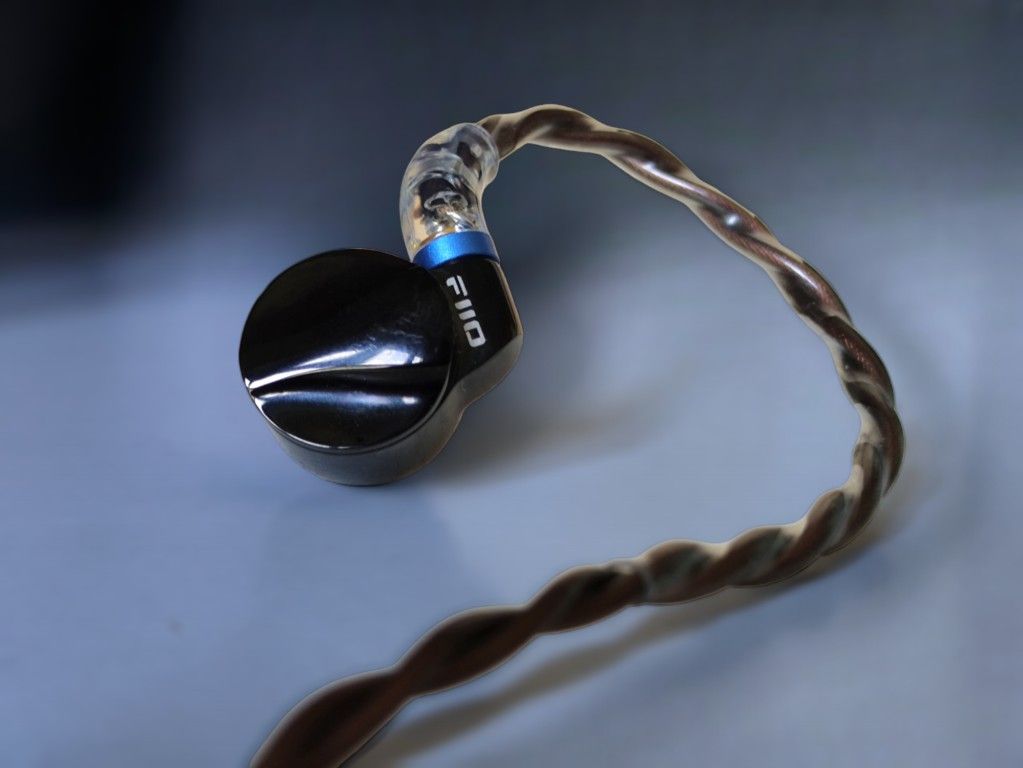
The FD15, like the FD5, is designed with a focus on the midrange and vocals. Here’s a FiiO engineer’s thoughts on the FD15:
The FD15 … is one of FiiO’s most balanced in-ear monitors, vocals-wise… because it produces a dense, perfectly lush vocal performance. It … captures the voices of both mid-range and low-frequency singers, truly conveying the emotions within the voices without sacrificing resolution … deep and cohesive bass, making instruments like drums sound solid and powerful. While it may not be the last word in detail in ultra-high frequencies like the very best multi-driver balanced armature earphones, even in dynamic and complex musical passages the treble remains perfectly clear.
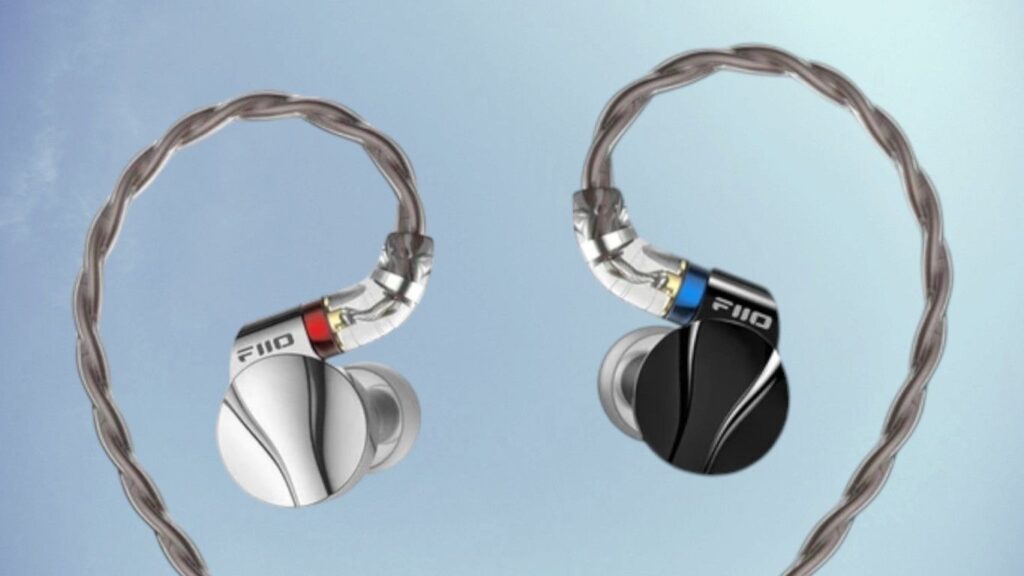
FiiO FD15 SPECIFICATIONS
- Driver: single dynamic 13.8 mm
- Diaphragm: aluminum-magnesium alloy
- Frequency response: 10Hz-40kHz
- Impedance: 320@1kHz
- Sensitivity: 112dB/mW@1kHz
- Cable: 4 strands with 480 wires, featuring a hybrid of silver and Furukawa monocrystalline copper.
- Cable length: about 1.2 m
- Earphone connector: expanded MMCX
- Audio plug: straight twist-lock swappable connector plug: 3.5 mm, 4.4 mm
- 5 types of ear tips included
- 2 types of tuning nozzles
- Stackable drawer box
- Single unit weight: about 12g (excluding cable)
- Silver or black finish
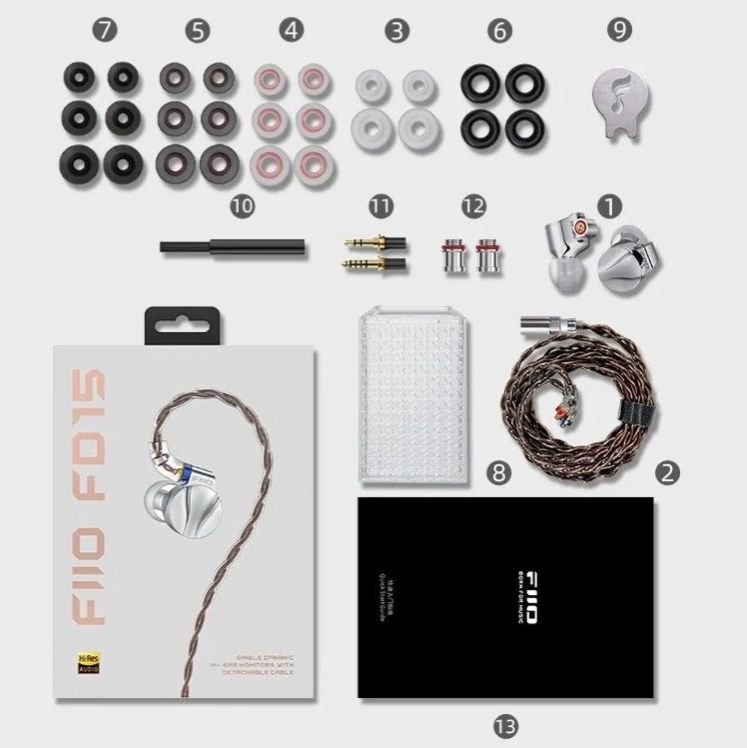
FiiO FD15 IN THE BOX
- Earphones*1
- Earphone cable*1
- Balanced eartips S/M/L*3 pairs (M pre-installed)
- Vocal eartips S/M/L*3 pairs
- Bass eartips S/M/L*3 pairs
- Foam earips M*2 pairs
- HS18 eartips S/M/L*3 pairs
- Storage case HB11*1
- MMCX quick release tool*1
- Cleaning brush*1
- 3.5/4.4mm swappable plugs*1
- Red/Black swappable sound nozzles*2 pairs
- Quick start guide*1
Reviewed at $149. We thank FiiO for sending us the review sample.
Check current price on Amazon: FiiO FD15
BUILD AND COMFORT
The FD15 is made entirely of metal and feels very solid. Though they are small, they are not particularly light. However, they sit comfortably in my ear. While not an issue for me, I would prefer the faceplate to have more rounded edges, as some users might find the current design uncomfortable.
The supplied cable is excellent, the selection of tips is impressive, and the stackable mini-drawer case is compact, potentially very practical and compatible with real LEGO bricks. You can buy additional cases separately on AliExpress to build your own custom stack for your IEM-collection.
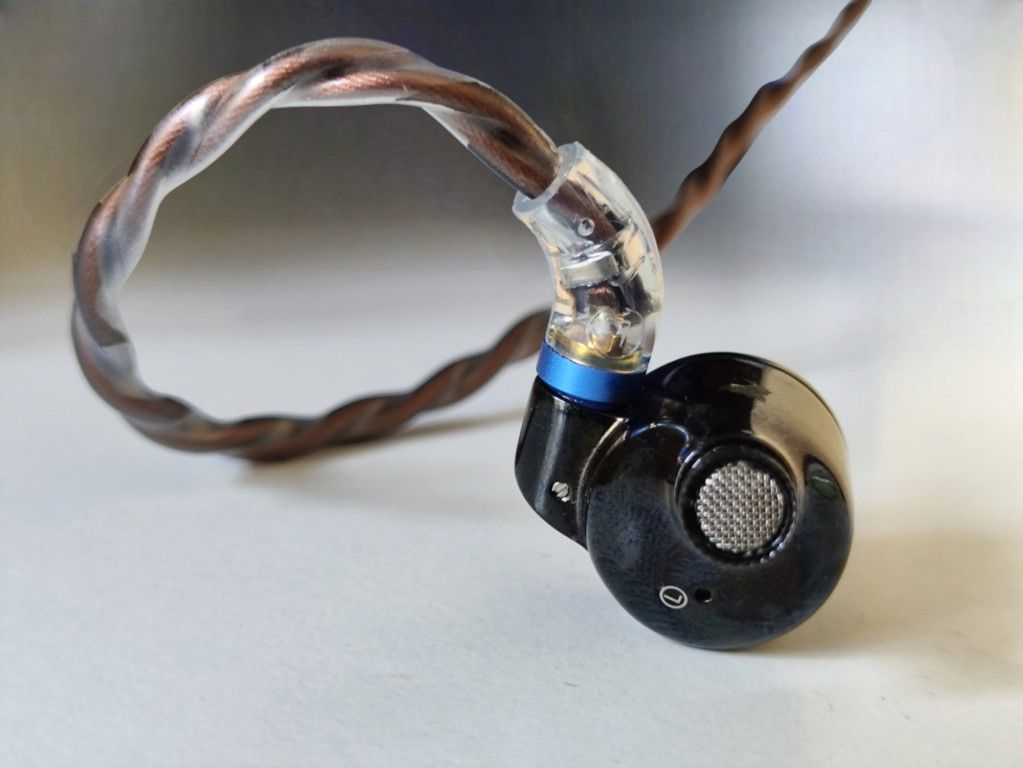
ABOUT TIPS AND NOZZLES
The FD15 comes with no less than 5 types of ear tips. I cannot possibly try them all and make comparisons between them. I have chosen to stick to my most used tips, the CP145 and the AZLA SednaEarFit Crystal tips. They fit me perfectly, and I’m acquainted with how they tend to affect the sound.
That being said, the excellent choice of tips that’s supplied with the FD15 gives you lots of options to get the sound and the comfort right.
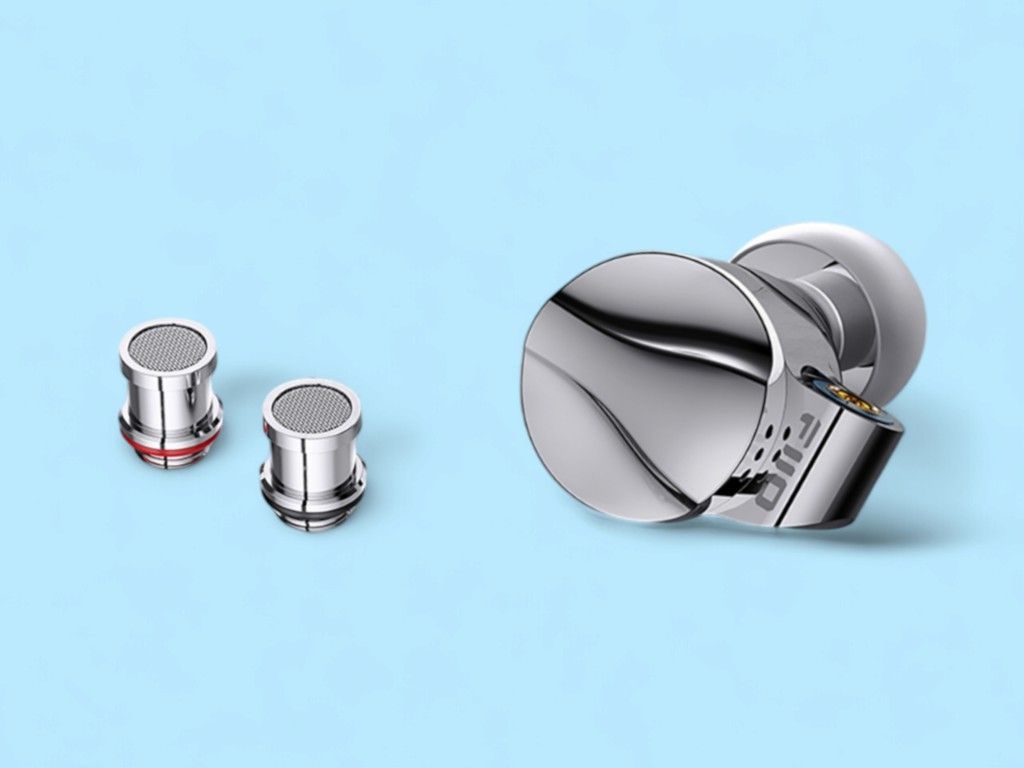
There’s also two different types of tuning nozzles provided. The black ring nozzles that are mounted on the earphones and an additional set of nozzles with a red ring. There’s no filter inside; they are hollow metal tubes. The only thing differentiating them is the diameter, with the red ring nozzle being slightly narrower.
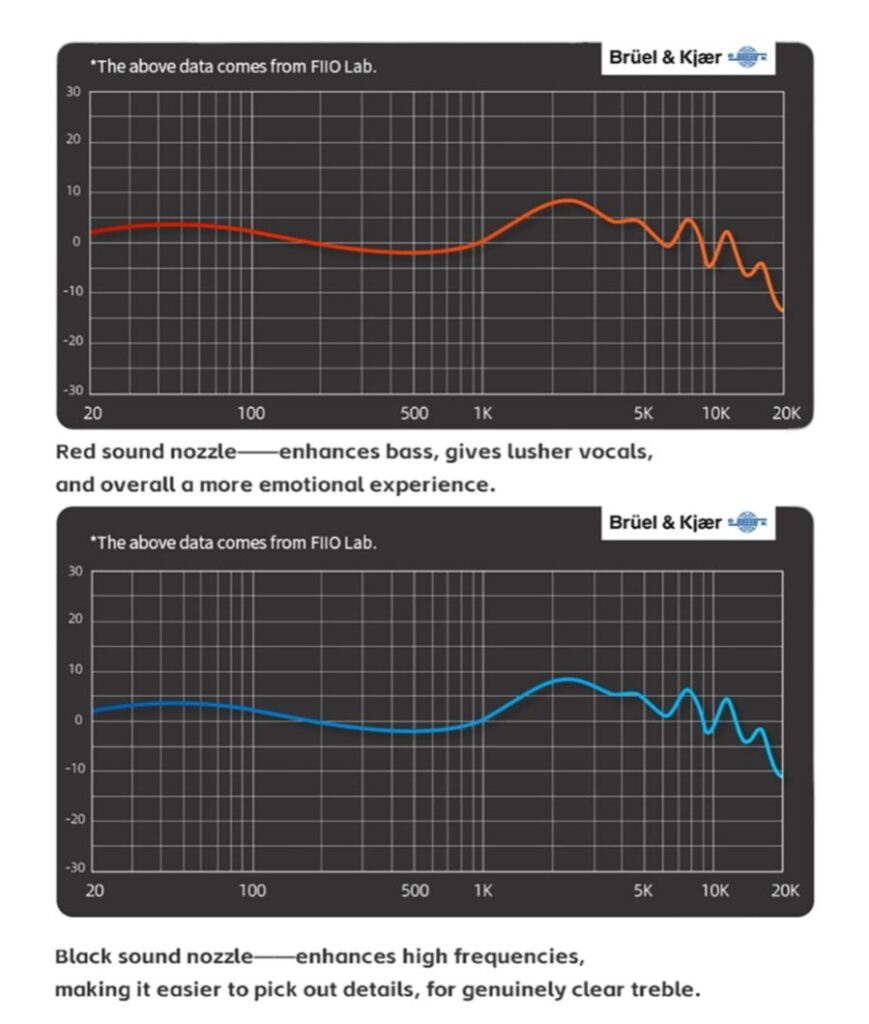
According to FiiO, these are the main differences:
- Black sound nozzle: enhances high frequencies, making it easier to pick out details.
- Red sound nozzle: enhances bass, gives lusher vocals.
The five different ear tips and two types of nozzles give a total of 10 possible tuning combinations. Since I stick with only two types of tips, I get four combinations, which I find to differentiate like this:
- Black ring nozzles and CP145 tips: Warm, lush, enveloping sound
- Black ring nozzles and AZLA SednaEarFit Crystal tips: Crisper and drier, more spacious with less warmth.
- Red ring nozzles and CP145 tips: The warmest sounding combination.
- Black ring nozzles and AZLA SednaEarFit Crystal: Quite similar to number 1.
The differences aren’t huge. I find the nozzles to make less of a difference than the tips, and the biggest difference was between combinations 1 and 2.
Anyway, it’s nice to have the possibility to fine-tune the listening experience with tips and nozzles. I find it a nice thing that the nozzles make subtle changes that can complement the effect of various types of tips.
For the rest of this review and especially in my comparisons with other IEMs, I will stick to my original configuration with the black ring nozzles and the CP145 tips, unless otherwise stated. There black nozzles are mounted on the FD15 in the box, and the CP145 tips resemble the ones that were mounted on the FD15.
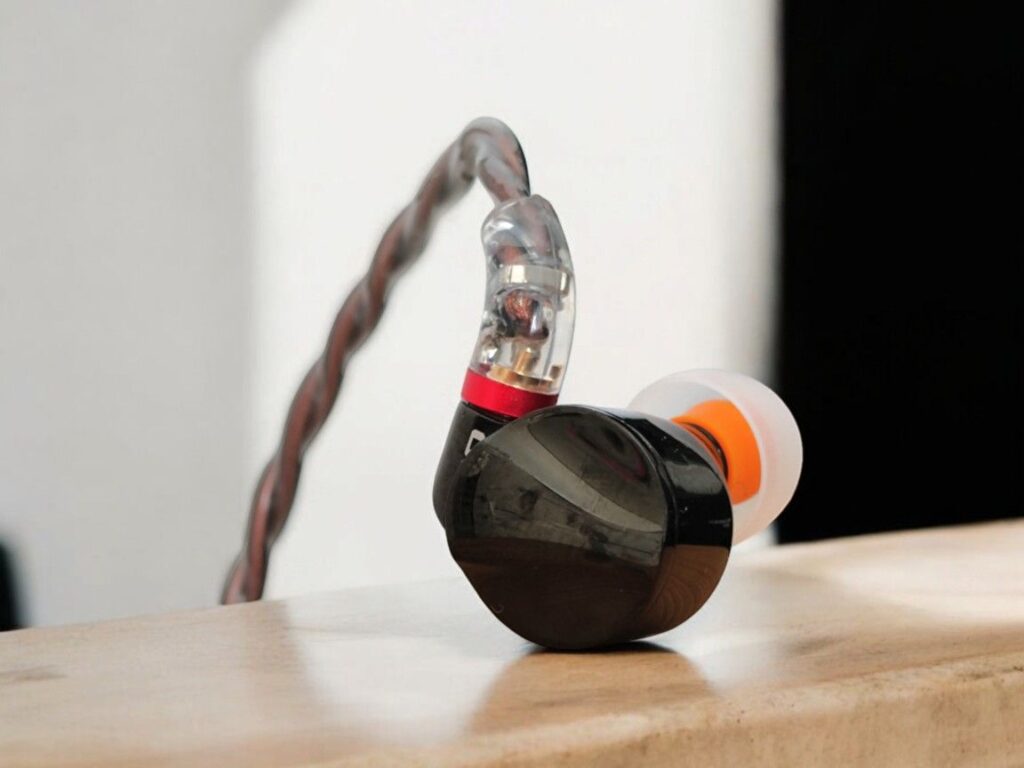
STANDALONE LISTENING IMPRESSIONS
Associated equipment: Topping A90 amplifier with the RME ADI-2 DAC FS as source. The RME sounds excellent by itself, but it’s more practical for me to use the Topping. As mentioned, I used the Spinfit CP145 ear tips, which suits me well and sounds nice on the FD15. I used the most neutral nozzles: the black ring nozzles that are pre-installed on the FD15.
Jambi by Tool
The FD15 renders guitars in a warm, full-bodied manner, while the bass is rich and enjoyable, though not the most defined or textured. Vocals are well separated, and there are no issues with sibilance.
Rocket Man by Bob James Trio
The presentation is lush, articulate, warm, and enveloping. The soundstage feels expansive, with excellent imaging, layering, and depth.
Aquela Muhler by Vinicius Cantuaria
The bass is deep and full, while the vocals are warm and inviting. The guitar is crisp and clear yet retains warmth. The percussion is smooth and spacious.
The Golden Age by Beck
With the FD15, the guitar and vocals take center stage, while the bass provides a supportive foundation. I’ve heard it stronger and more articulate. The presentation is intimate but offers a nice soundstage with a holographic rendition.
Lazarus by David Bowie
The bass guitar is dynamic and engaging, while the guitar and saxophone both have a warm, rich sound. Vocals are delightful.
Come Away With Me by Norah Jones
Norah Jones’s vocals are mesmerizingly beautiful. There’s a special glow to the mids, and the electric guitar is also delightful. The soundstage is not very large, but that does not matter when the rest is as good as it is.
Yoshimi Battles the Pink Robots by The Flaming Lips
The guitar is crisp but not aggressive, avoiding the harshness it can sometimes exhibit. The bass has rich textures, while the vocals are warm and nuanced. The treble details are rendered delicately.
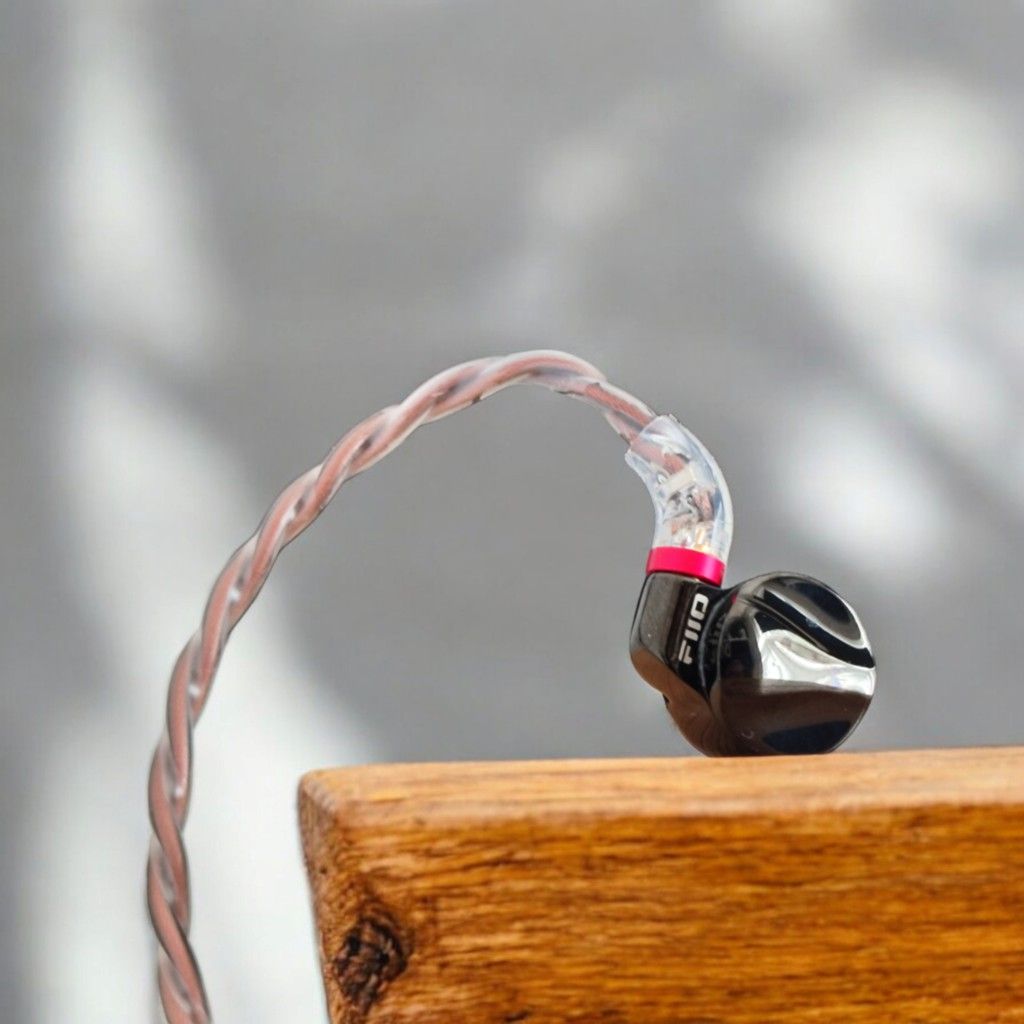
Escape Route by Boris Blank
With the FD15, the bass is rounded and present but not too dominant. The midrange, especially the trumpet, gets the focus. There’s lots of detail; the presentation is intimate and enveloping.
Maple Noise by Greene Serene
This very dynamic track sounds excellent on the FD15, offering a warm and engaging experience. The bass is tactile and full-bodied, while the trumpet exhibits great timbre and presence. The percussion is snappy with a rich presence, and the piano is rendered playfully. The soundstage is pretty good too.
It Could Be Sweet by Portishead
The vocals on the FD15 are beautiful, present, and nuanced. The bass is full-bodied but not the tightest, while the percussion is snappy. The treble is pleasant and slightly laid-back.
Never Enough by Loren Allred
The FD15 delivers this brilliant vocal performance as good as it gets with this mediocre production, thanks to its forgiving nature that softens dryness and edginess. Its warm sound signature plays well with many poor-quality recordings.
Summer 3 Vivaldi Recomposed by Max Richter
The FD15 delivers a nice performance, but I don’t think this track plays to its strongest sides.
Mahler’s Symphony No.2 III by Paavo Järvi
The FD15 delivers a relatively spacious and delicate sound but can be somewhat laid-back and thick. Switching to the wide bore AZLA SednaEarFit Crystal tips, however, transforms the sound—making it crisper and more open. There’s more clarity and better spatiality, excellent texture, and definition.
Young Vivaldi Violin Concerto RV 820 III by Ensemble Modo Antiquo
Also here, the sound is a bit too laid back with the CP145 tips, but excellent with the wide bore AZLA SednaEarFit Crystal tips.
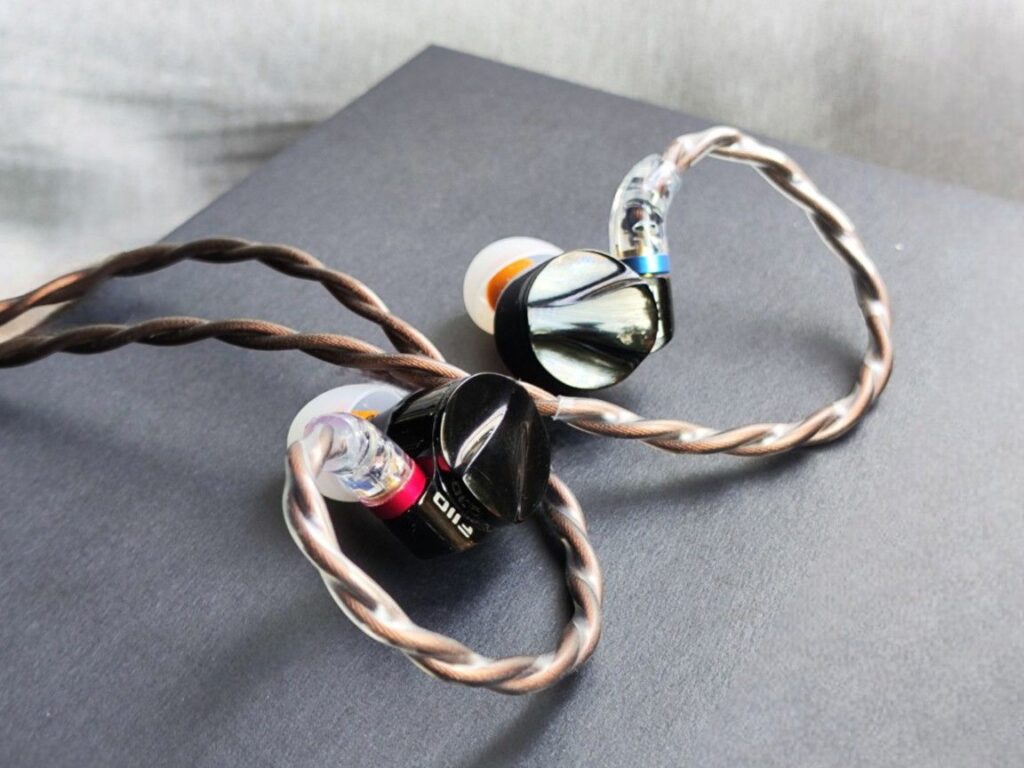
WRAPPING IT UP
Sound Signature
The FD15 offers a balanced, midrange-focused presentation. It delivers a warm tuning without sounding dark, maintaining a rather neutral tonality..
Treble
The treble is resolved and refined, smooth and delicate without ever becoming harsh or overly dark.
Midrange
The FiiO FD15 is more than anything about the midrange. It’s resolved, delicious and a bit thick, with body and lots of soul.
Bass
The bass is well-behaved and nice, though not the tightest or most detailed. It’s not excessive in quantity, but full and warm sounding complementing the FD15’s musical tonality. On its own, however, it’s not particularly impressive.
Soundstage and Imaging
When listening to the FD15 alone, the soundstage and imaging are quite good. However, compared to a selection of quality IEMs in this price range, they are not always very impressive. There are more open-sounding alternatives with more precise imaging available. That being said, this is a trade-off: if you prefer a warm, full-bodied presentation, the soundstage naturally becomes more intimate.
Detail, Dynamics, and Timbre
In terms of detail, the FD15 performs well for its price. It’s not the most articulate “in your face” presentation but rather subtly reveals finer nuances. Dynamics are generally good, though not mind-blowing. There’s one very good reason for this: timbre. With the FD15, everything is about timbre. That’s where it truly excels. The midrange is stunning, but the smooth and delicate treble is also impressive. While the bass is not exceptional on its own, it complements the mids and highs coherently, which is more important.
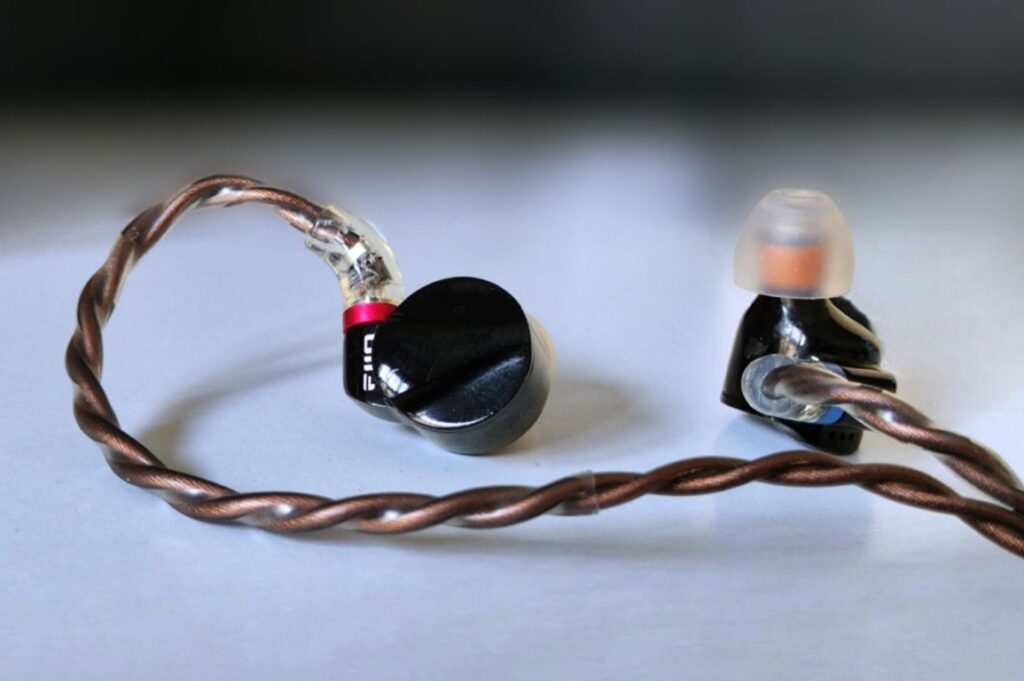
COMPARISONS
Associated equipment: Topping A90 amplifier with the RME ADI-2 DAC FS as source. I used the Spinfit CP145 ear tips, on all IEMs.
SIMGOT SuperMix 4 vs. FiiO FD15
The SuperMix 4 is a brand-new hybrid from Simgot, featuring four different types of drivers: dynamic, balanced armature, planar magnetic, and piezoelectric. It sounds quite different from the FD15, but when I recently reviewed it, I found it to be a terrific performer.
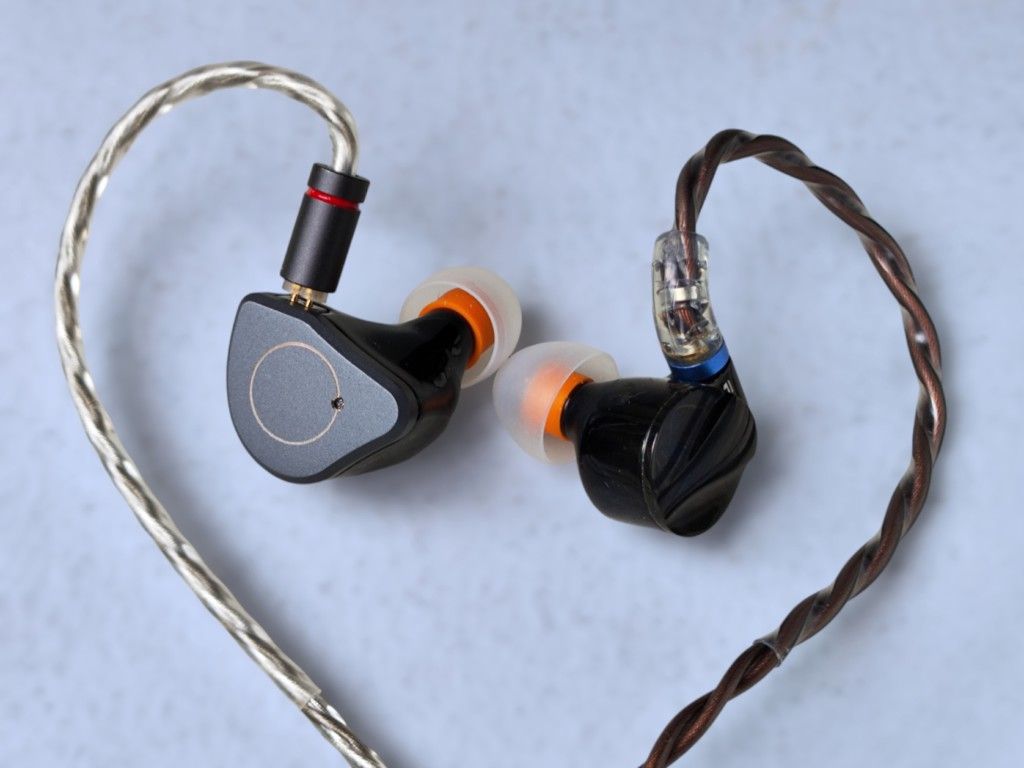
Starting with a treble, they are both very smooth, natural-sounding, and very detailed, although the Supermix 4 is even more refined.
The midrange is very different. The FD15 sounds full-bodied, warm, and very engaging and intimate. It is very dynamic and tactile, with excellent timbre. The Supermix 4 is significantly less warm. Although it sounds excellent by itself and has great timbre and detail, it feels a lot thinner in direct comparison.
The bass of the FD15 is thick and warm, and even though it is dynamic and reaches deep, it lacks the definition and precision of the Supermix 4.
When it comes to soundstage and imaging, there is no contest. The FD15 is good, but its rich tonality makes a huge soundstage quite impossible. The Supermix 4 has much more space between the instruments and significantly better imaging.
In conclusion, these two IEMs each offer distinct strengths and cater to different preferences, making them both excellent choices in their own right.
- Linsoul: SuperMix 4
- Amazon: SuperMix 4
SIMGOT EA1000 vs. FiiO FD15
The $219 Simgot EA1000 has lots in common with the FD15. It uses a single dynamic driver, it’s a metal chassis, and they share a similar sound signature; both have a strong and present midrange and a generally organic and pleasant tonality.
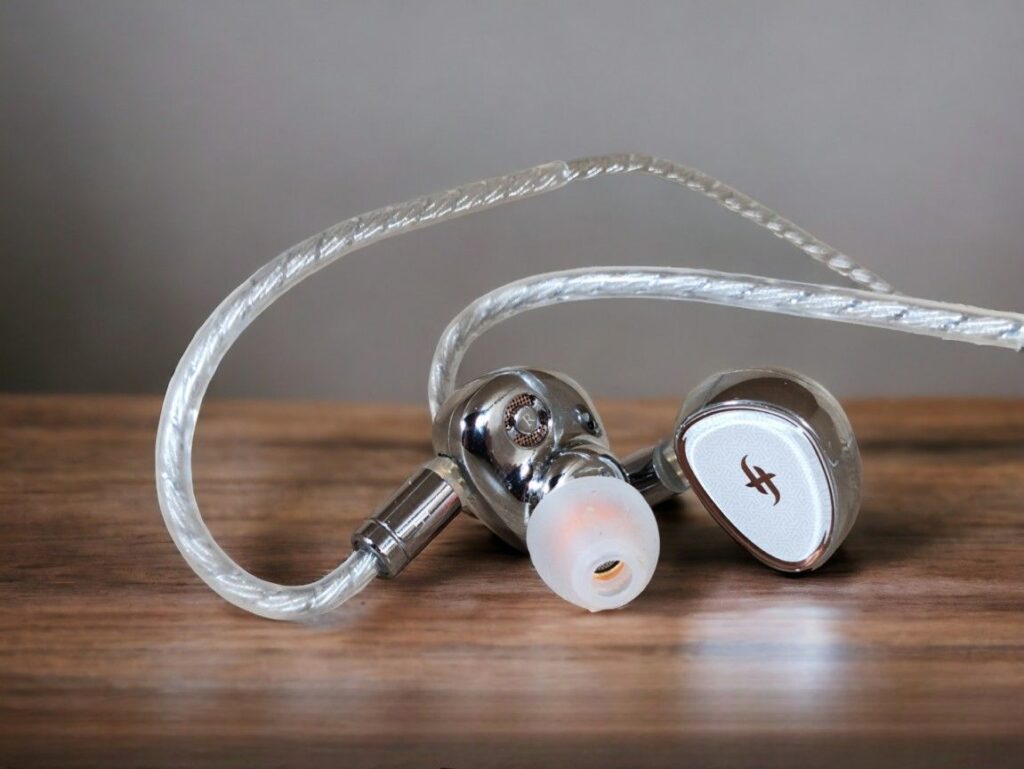
Even though the FiiO FD15 and SIMGOT EA1000 have similar sound signatures, they also have different strengths. The FD15 is the most midrange-centric. It offers a thicker, warmer, and more fully-bodied presence, which is often hard to beat. The EA1000 is brighter and airier, with stronger, better defined bass and a larger soundstage, providing better instrument separation and layering.
- Linsoul: Simgot EA1000
- Amazon: Simgot EA1000
LETSHUOER S08 vs. FD15
The newly released $99 S08 features a single 13mm planar magnetic in a light and compact aluminium chassis.
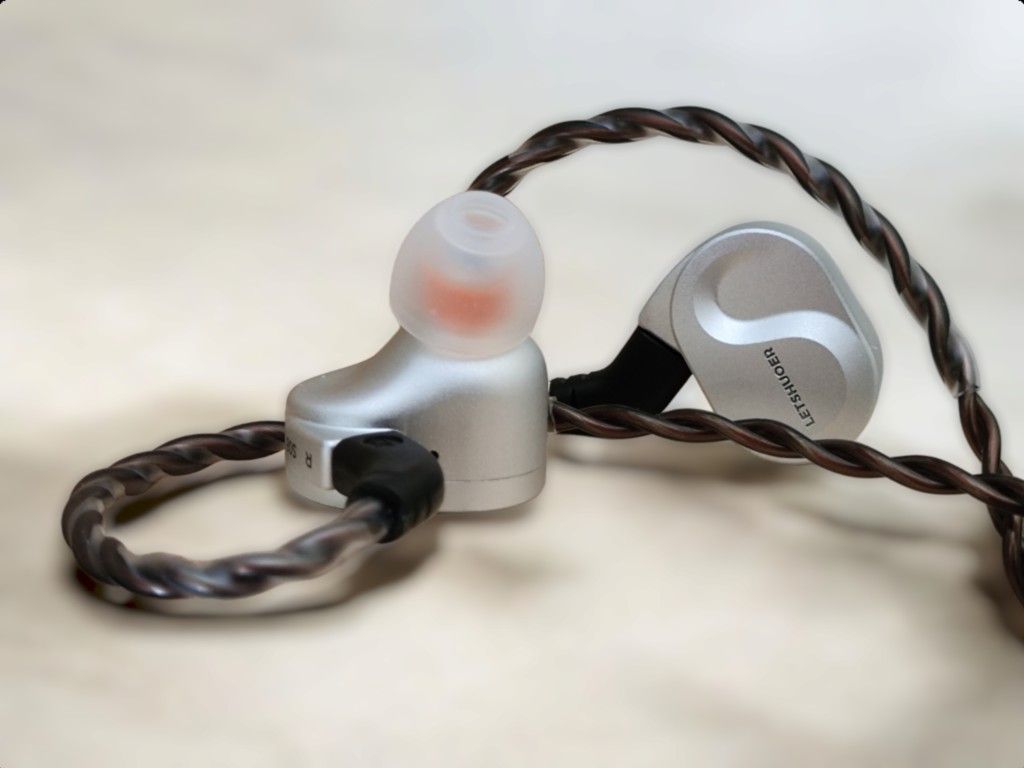
First, let me emphasize that both of these in-ear monitors are susceptible to tip rolling, and their sonic qualities will vary with different tips. With my SpinFit CP145 ear tips on both, the sound signatures of the FiiO FD15 and the Letshuoer S08 are not too different. They’re both warm leaning to neutral, with a well-balanced bass and a non-offensive high end.
Starting with the treble, I find both to be smooth and definitely not too crisp or harsh. They’re both very detailed and have great timbre, but I find the FD15 to be a bit more articulate in the highs.
Regarding the midrange, the FD15 offers a thicker, warmer, and richer presence, whereas the S08 is more neutral and less lively. Both have good timbre, but I have a soft spot for the FD15’s incredibly rich midrange, which somehow also is very detailed.
The bass differs more in quality than in quantity. The FD15 is baked yet rich and full but lacks the tightness and definition found in the S08.
Both IEMs offer a good soundstage with nice imaging. It depends on the track, but generally, the FD15 feels more intimate, while the S08 provides a slightly larger soundstage.
- Linsoul: Letshuoer S08
- Amazon: Letshuoer S08
FiiO FD5 vs. FD15
The FiiO FD5, the predecessor of the FD15, impressed me with its warm, full-bodied, and detailed sound. I was disappointed to hear it was discontinued. I’m skeptical about successors, as improvements often come with compromises. FiiO’s claim to maintain the FD5’s quality while halving the price for the FD15 seemed hard to believe.
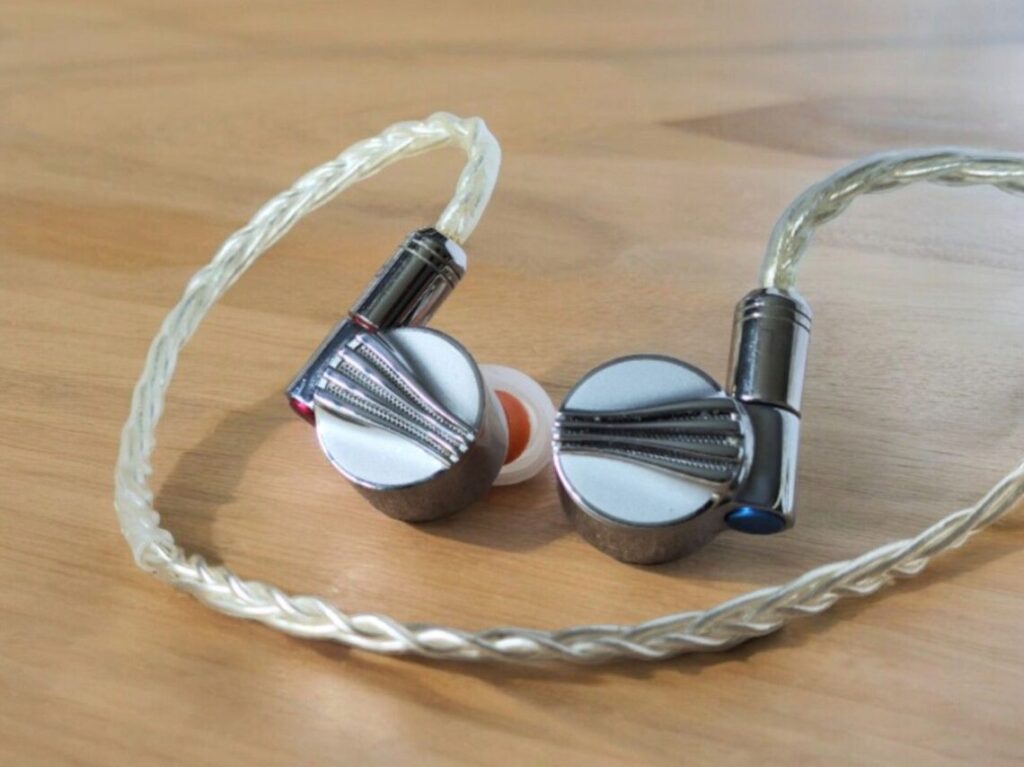
When I finally got to compare the two, however, I was amazed. For the most part, the FD15 maintains the delightful tuning of the FD5, yet has subtle improvements in detail, spaciousness, and general technical performance.
While the FD5’s timbre still is something special, the FD15’s small enhancements make it my preferred choice in many cases. The differences are subtle, and the FD15’s key upgrade is its more affordable price, making it an impressive value for money.
To conclude, both the FiiO FD5 and FD15 are excellent-sounding IEMs with a warm, mid-centric sound signature and natural, organic timbre. The differences between them in terms of physical appearance and sound are minor. The FD5 still has its unique timbre, but with the FD15, FiiO made a worthy successor that mostly stays true to the original.
AMPLIFICATION
All listening tests so far have been conducted using my desktop setup. However, most users will likely use the FiiO FD15 with portable amps and sources.
With Quboz on my POCO F5 phone’s headphone output, it already sounds very good. I could easily be happy with this sound for a weekend trip. It stays in the +/-40% volume range.
The Jade / FiiO JA11 and KA3 sounds better, the xDuoo Link2 Bal even more so. The THX Onyx is ok, but isn’t defending its higher price tag. The Dragonfly Cobalt sounds particularly good, very clear with great definition. It’s close to my desktop rig. However, my favourite portable DAC/Amp for the FiiO FD15 is the $89 Letshuoer DT03. It’s almost at the level of the more expensive Cobalt in terms of detail, but has a warmer tonality.
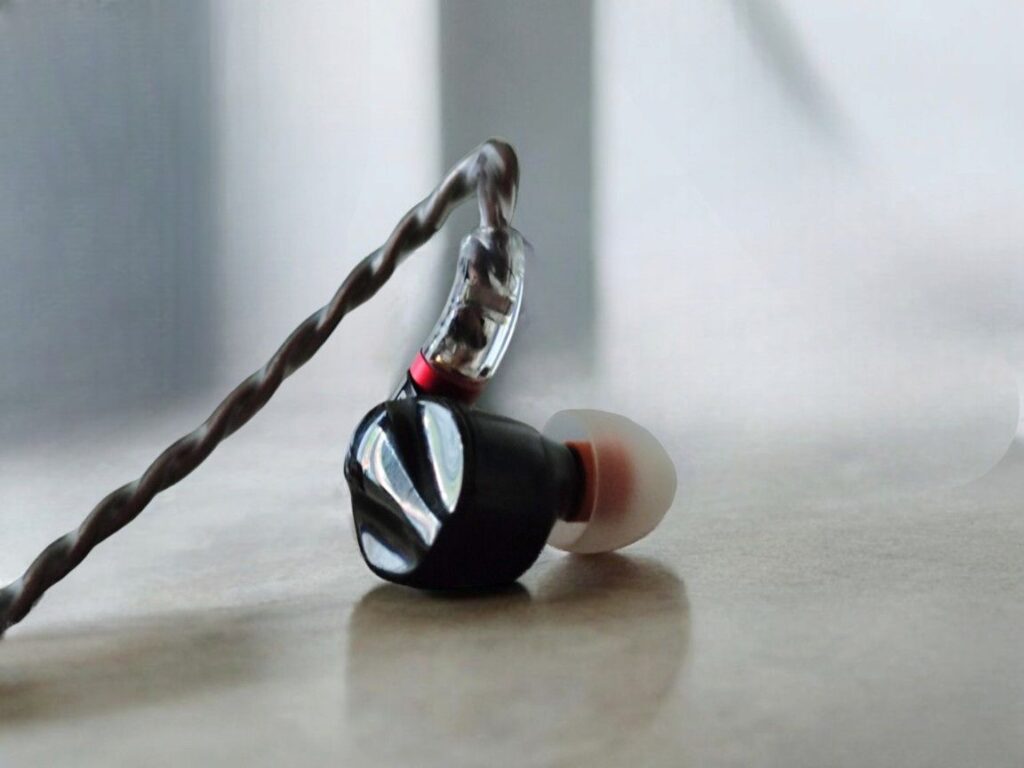
CONCLUSION
FiiO has done a fantastic job with the FD15, preserving the main qualities of the FD5 while offering improved technical performance. This is what innovation should be: delivering better-performing earphones at lower prices.
The FiiO FD15 delivers what it was designed for, offering a superb midrange timbre while maintaining fine detail and a well-balanced sound signature.
Purchase on Amazon: FiiO FD15
Any purchase you make on Amazon or Linsoul with any of our affiliate links will give us a small provision at no cost to you.
We only get a provision for items that are not returned, so there’s no incentive for us to recommend something that’s not good.
Linsoul : Headphones, Earbuds, Wireless Earbuds, Desktop DAC/AMP, Portable DAC/AMP, Digital Audio Players,
Amazon: Headphones, IEMs, Headphone Amplifiers, Home Audio or Anything else.
.
If you enjoyed this article or other content on The Headphoneer, you might consider leaving a small donation to keep this website up and running. No donation is too small. Thanks for supporting us!
If you like our work please follow us on Instagram, Facebook and Twitter , it will help us grow. Sharing is caring 🙂


